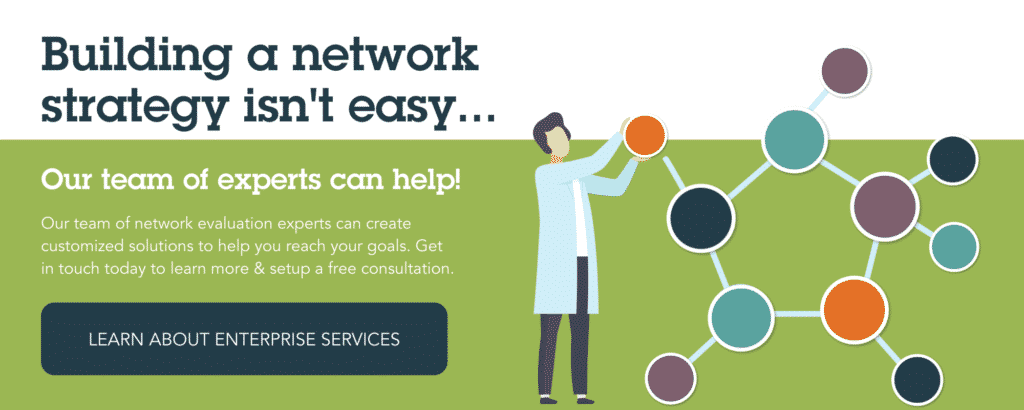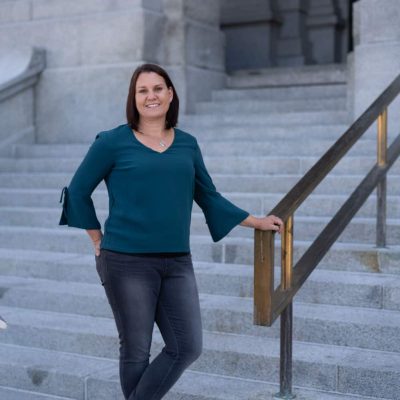Networks are Inclusive, Equitable and Diverse… Right?

This is the first follow-up to the introductory blog “Networks are the Answer…Right?“ by VNL’s CEO, Dr. Danielle Varda, exploring the question of whether we have pushed the limits of collaborative networks, and how the risks might outweigh the benefits.
She posed three big questions:
- What are the equity implications of asking communities to build more relationships when they have already spent through their “relationship budgets”?
- What have we collectively learned about networks, how to manage them, and what works?
- How do we stop the network crazy, leverage the best of the approach, and open up the solution space again to alternative ideas?
This blog will address the first question and lay the foundation for deeper conversations about the equity implications of an over-networked society.
Networks are Equitable, Inclusive and Diverse… Right?
Just the other day, I was reminded of a principle that I has begun to play in my head over and over again:
When we ask members of a community to engage in a network, we are also asking them not to engage in something else.
I had just received a call from a national organization with has a long-standing, historical reputation in the country for addressing the needs of children and families. I have always admired their work and was excited at the opportunity to discuss their network strategies.
Turns out, their strategy was a very familiar one: more networks in more communities will help solve the big problems they wanted to address.
And their focus – communities with few resources and historically more negative child and family outcomes. As they talked through their plan to deploy resources to “launch” networks in six communities, I started to get what has become a familiar feeling.
Many People Equate Networks with Inclusion: More is Better.
Here was yet another effort by external forces to bring more networks to communities. This has become a strategy for foundations, national organizations, governments, and even legislators. Like others, I am grateful and motivated by the investments of time, money, and energy into these efforts. I have seen the results of the collaborative synergy of networks and I believe that together, we can solve problems in ways that we cannot alone.
However, like many, I have begun to wonder not only if all these resources are moving the needle in the way we hope, but what risks might accompany these efforts for communities?
I have found myself thinking quite a bit about the argument that networks increase diversity, leverage resources, and broaden access to opportunity, when the burden to participate might be stripping communities of the very resources they so desperately need to serve their communities.
Yet there it was again: When we ask members of a community to engage in a network, we are also asking them not to engage in something else.
And when a funder, a national organization, a government, or a legislator asks communities to engage, they do. The well-resourced communities do, and the communities without resources also do.
All organizations have a limited “relationship budget”, and most have no budget allocated towards building relationships and engaging in networks. Yet, organizations are treated like all relationship budgets are equal and requests for time and resources to participate in networks is not differentiated.
It is almost unheard of to reject the idea, or invitation, to participate in a collaborative network. And the more powerful, bigger, richer the organization that requests the community partners to join, the harder it is to say no.
Are Networks Really as Equitable and Inclusive as We Believe?
The result – communities with resources are engaging, and communities without resources are engaging. So those very communities that need the most resources to serve the people and shift the needle on poor outcomes, are spending proportionately more time in networks than those communities with more resources to serve their populations.
There is something very inequitable about this.
- Are we actually taking much needed resources from communities when we expect them to engage in collaboration and networks?
- And, are we adequately providing the funding and support they need to engage?
- Are we building a strategy that promises them that the long-term plan it to use fewer resources, to get the same collaborative advantage over time?
- Is there a plan for this work to end? A promise that after investing in these networks, they will get to return to more time serving their populations?
Or are we basing the work on a “more is better” approach, without really understanding if that approach is going to work?
These are important questions that we should all be asking before we make the ask of resource deprived communities to engage in networks.
Better Ways to Build Intentionally Equitable Networks
We can be equitable in how we manage networks, and below are some tips for addressing the equity implications and moving forward in a smarter, more efficient way.
1) Before starting a network, do the research to find out what already exists.
Could the funder reinvest in existing networks, and even encourage redundant networks to work together? There is almost no community today without cross-sector networks in place. Starting a new network should be a last choice, only after a determination can be made that the network does not already exist.
2) When a network is launching, take the time to build a network strategy based on a concept that less can be more.
Identify the end of the networks, who is going to be invited, and how it is going to be governed. Make space for leadership from throughout the communities – those affected by the work, those leading networks, evaluators, etc. to share their experiences. Build a network strategy!
3) When you implement that strategy, stick to the VNL PARTNER Method mantra:
“Only ask people to participate when they have a role, they know what the value of that role is, and they know that their value will be leveraged in that engagement. And promise them that you are working to building sustainable collaborative synergy and advantage, but with a goal on reducing asks, resources, and strain on their organizations.”
4) Measure and track your networks.
Follow the tone, quality, and frequency of interactions. Capture who is giving more and who is taking more. Be certain that those with less are asked to give less while ensuring equal access and full transparency. Use tools like the PARTNER Platform to open network data tracking systems so you can see what is changing over time, and when you have reached your goals.
5) Don’t be afraid to shift things.
When the evidence, the data, the story begins to show that there are inequities in your plan, act on it. A strategy that does more harm than good will never reach the impact intended, even when everyone is getting asked to do as much as possible all the time.
6) Be open to input from network members.
Ask them what they are giving up to be in this network. Address those gaps and ensure them that either the benefit will be enough to fill those gaps and then some, or let them off the hook and make them believe that the whole will be greater than the sum of its parts – that they will benefit even if they contribute less, because they cannot afford to give more.
7) Never lose the commitment to be inclusive, diversity, and equitable, AND it is ok to also be efficient.
Efficiency may be the most equitable choice you make in your network.
Networks can be Equitable, Inclusive & Diverse!
These tips follow the PARTNER Method: Shift, Design, Track, Adapt and Enact. To learn more about the PARTNER method, and how it can help you build a more equitable platform for network building, visit our learning lab, and sign up for our online course on Building Data-Driven Network Strategies.
About the Author: Dr. Danielle Varda
CEO, Founder, Professor, & Mother of Three Spirited Girls
Danielle is a scientist turned start-up founder, leading Visible Network Labs as CEO. Her combination of 20 years as a network scientist studying social connectedness and health, published author, 12 years as a tenured professor at the University of CO Denver, and her successful launch and scaling of the Center on Network Science came together in one big idea to start VNL. She is an entrepreneur, technologist, network scientist, fundraiser, and mother to three spirited girls. Her calling came when she realized her unique ability to develop technology solutions bridge complex systems science with everyday applications in communities, organizations, and business. She is a nationally known expert and keynote speaker on applied network science, with specific expertise in health system, public health system, entrepreneurial ecosystems, and educational system approaches. Danielle has published over 30 peer-reviewed articles on networks and their impact on health, well-being, and economic outcomes. Danielle leads VNL’s strategic partnership approach, is the company’s lead fundraiser, and has a vision for how to utilize network science to solve our most pressing and intractable problems.
In addition to her leading VNL, she is also an Associate Professor at the School of Public Affairs, University of Colorado Denver where she is Co-Director of the Center on Network Science, Director of the Nonprofit Concentration in the MPA program, and Advisor to the Dual MPA-MPH Degree. Additionally, she holds a secondary appointment in the Colorado School of Public Health, Department of Health Systems, Management, and Policy. She also has a courtesy Associate Professor appointment in the School of Information Sciences at the University of CO Boulder.








